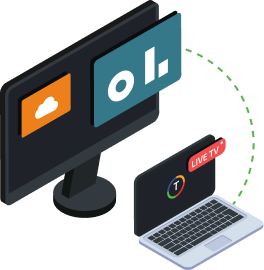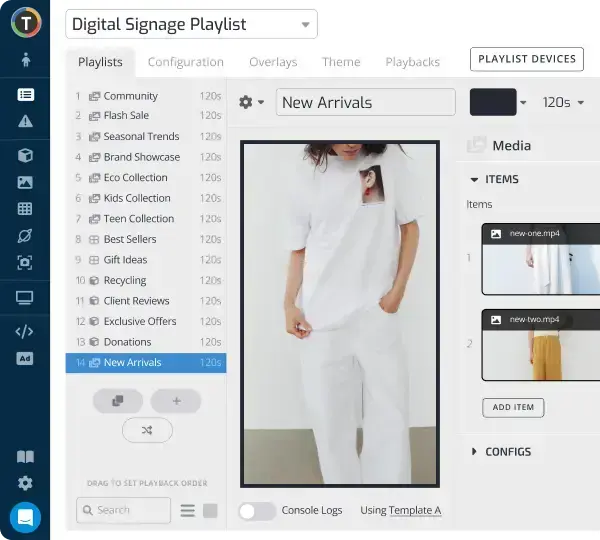Effectively Managing Distributed Teams and Communication
WRITTEN BY: TelemetryTV, 04-08-2020

Remote work is nothing new. In fact, most of today’s leading companies are actively structuring large parts of their business with remote workers.
According to a Gallup’s State of the American Workforce report, 43% of all employees said they work remotely sometimes, and one out of every five works remotely full time. In the last decade alone, the amount of people who work remotely at least once per week has increased 400%. Of course, that trend has only accelerated in the wake of the COVID-19 outbreak, as thousands of businesses have been forced to move their operations online or shut down.

Motivating employees who work from home or a coffee shop isn’t always the easiest task though, especially for organizations wholly unfamiliar with it.
When done right, though, businesses can reap tremendous benefits from using distributed teams. Not only does remote work remove the need for costly office space, it also gives companies the flexibility to hire talent from all across the world. What’s more, remote employees get the luxury of having much more autonomy, which in turn can garner increased worker satisfaction and loyalty.
With that said, here’s how your organization can best start managing distributed teams to ensure they always stay engaged and productive.
Best practices for managing distributed teams
1. Schedule team and individual meetings
The biggest failure that most businesses make when it comes to managing distributed teams is that they don’t keep a consistent line of face-to-face communication. Instead, they rely on email and workplace messaging apps to do the job. Put simply, it’s not sufficient.
If you want to ensure a collaborative workplace and connect your physical and remote employees, you need to do regular virtual team meetings and individual check-ins through video teleconferencing. That way, your remote workers always stay in the loop, aligned with their goals, and feel like they’re a part of your company’s overall success.
2. Progress updates
Once you’ve used your virtual meetings to set the agendas going forward for your distributed teams, it’s important for them to always keep management informed on progress updates. This could come in the form of emails detailing the status of a project or by having remote employees submit their work at different intervals as they progress.
Whatever the case, set deadlines and consistently make sure that your remote teams are on pace to meet them. Just don’t micromanage them.
3. Goal tracking
Remote work is only truly successful when it all flows in one harmonious direction towards your company’s overall goals. The best way to ensure this is by always keeping your distributed teams on the same page, motivated, and on track to hit their objectives. So give them a detailed, measurable plan of attack and track it as it progresses
And don’t forget to give remote employees props when they accomplish certain objective milestones. It’ll keep them motivated and let them know that their hard work isn’t going unappreciated.
4. Communication guidelines
In the realm of managing distributed teams, lines of communication often—and very easily—get muddled. That’s because—unlike face-to-face communication—tone and context aren’t always clear, people’s attention is often distracted, and communication channels are constantly changing. That’s why a clear-cut internal communication strategy and guidelines need to be drawn out and abided by to guarantee efficient communication.
Setting clear and consistent guidelines and communication best practices for things like time windows for communication, go-to messaging channels and apps, and communication etiquette are musts.
5. Instilling workplace culture
Businesses are only as good as their workplace culture. That’s why following workplace culture examples and fostering positive workplace vibes both in your physical and remote workspaces is paramount. That means constantly pushing your company’s core values to remote employees.
More than that, though, you should be doing things that promote teamwork, inclusivity, and a healthy competitive spirit amongst your remote employees. That way, they’ll be much more likely to buy-in completely to your company’s overall ambitions.
Top tools for distributed teams
Successfully managing remote workers requires a wide range of apps and software. Here are our top tools for managing remote employees:
- Slack
- Google Drive
- Dropbox
- Trello
- Zoom
- Skype
- Basecamp
TelemetryTV Desktop

The TelemetryTV desktop app is another great way to keep your remote employees engaged. The desktop player makes managing distributed teams easy by keeping your office and remote teams informed and engaged wherever they are. Basically, it makes all the corporate communications broadcast on your digital signage screens inside your office available to your remote teams on their laptops or desktop computers.
All they have to do is download the TelemetryTV app. Then they access all the valuable resources displayed on your screens, from workplace policy notifications and data-driven digital dashboards to your Slack wall or company calendar.
Getting started
Managing remote teams can be both problematic and time-consuming, but it doesn’t have to be. Taking straightforward steps to create a seamless remote work experience can go a long way.
Pair that with innovative remote work tools and clear communication guidelines, and managing remote teams becomes infinitely easier.












